
Tudor Black Bay ETA – A Future Classic?
Since the Tudor relaunch in 2012, the brand has successfully entered the market and become a brand that a lot of people respect and appreciate. With its popular Heritage series of vintage-inspired watches from its past, it has been a strong force in the watch industry, offering robust, high-quality sports watches at a very competitive price.
The Heritage Black Bay series is the most successful of Tudor’s models, and since its launch in 2012, it has received numerous awards and praises from watch enthusiasts and collectors. The watch takes the best elements from Tudor’s vintage dive watches that people have come to love and collect, and mixed them into a watch that blends it all together with modern tech.
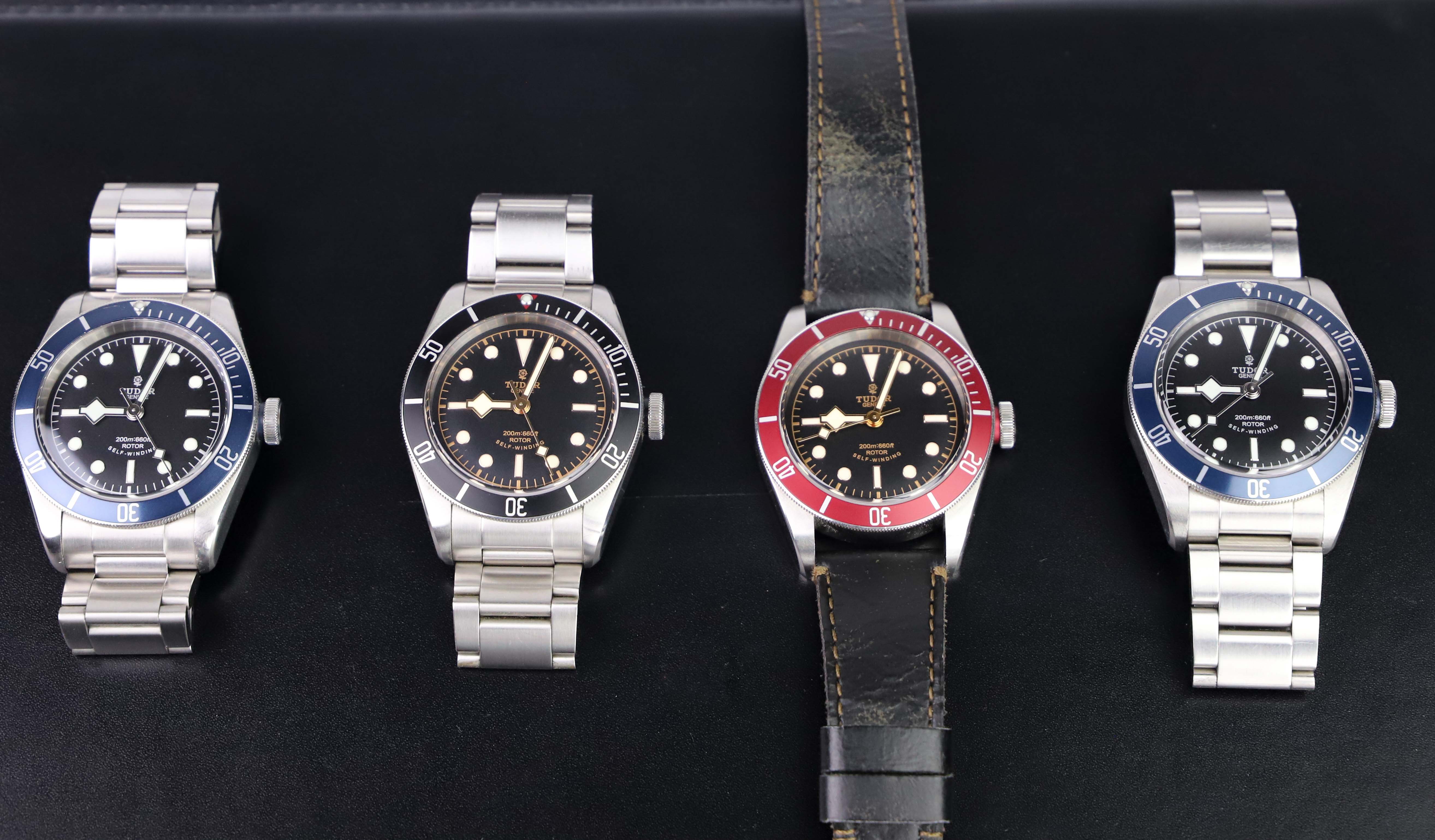
It’s safe to say that it was the Heritage Black Bay model that resurrected Tudor and helped it get back on its feet after several decades of rest. The model was launched as the reference 79220 in 2012 and was in production until 2016. At this time, Tudor replaced it with a new reference, 79230, which featured a few differences and updates from the previous reference, with the main one being the change from an ETA movement to an in-house movement.
The change to an in-house movement is a step in the direction that the Tudor brand wants to go, as manufacturing movements in-house shows that you are a watch company that means business, and not just assembling watches, but rather manufacturing them. Furthermore, the use of an in-house movement also meant adding another value proposition to the watch, and making it more competitive, as there are few competition dive watches within that price range that are equipped with in-house movements.

Now, we don’t need to get into the details of Tudor’s relationship with Rolex, because it is already well-known. But we can say that the fact that Tudor can use Rolex’s know-how in developing its in-house movements certainly helps a lot, and makes the watches even more competitive and attractive due to the reputation that Rolex calibers have.
Tudor Black Bay ETA
Since the Heritage Black Bay line was introduced, its popularity has only grown. But today, people looking to buy a Black Bay stand in front of a difficult decision. Should you buy the new and updated Black Bay with an in-house movement, or should you buy the ”original” Black Bay which is no longer in production?
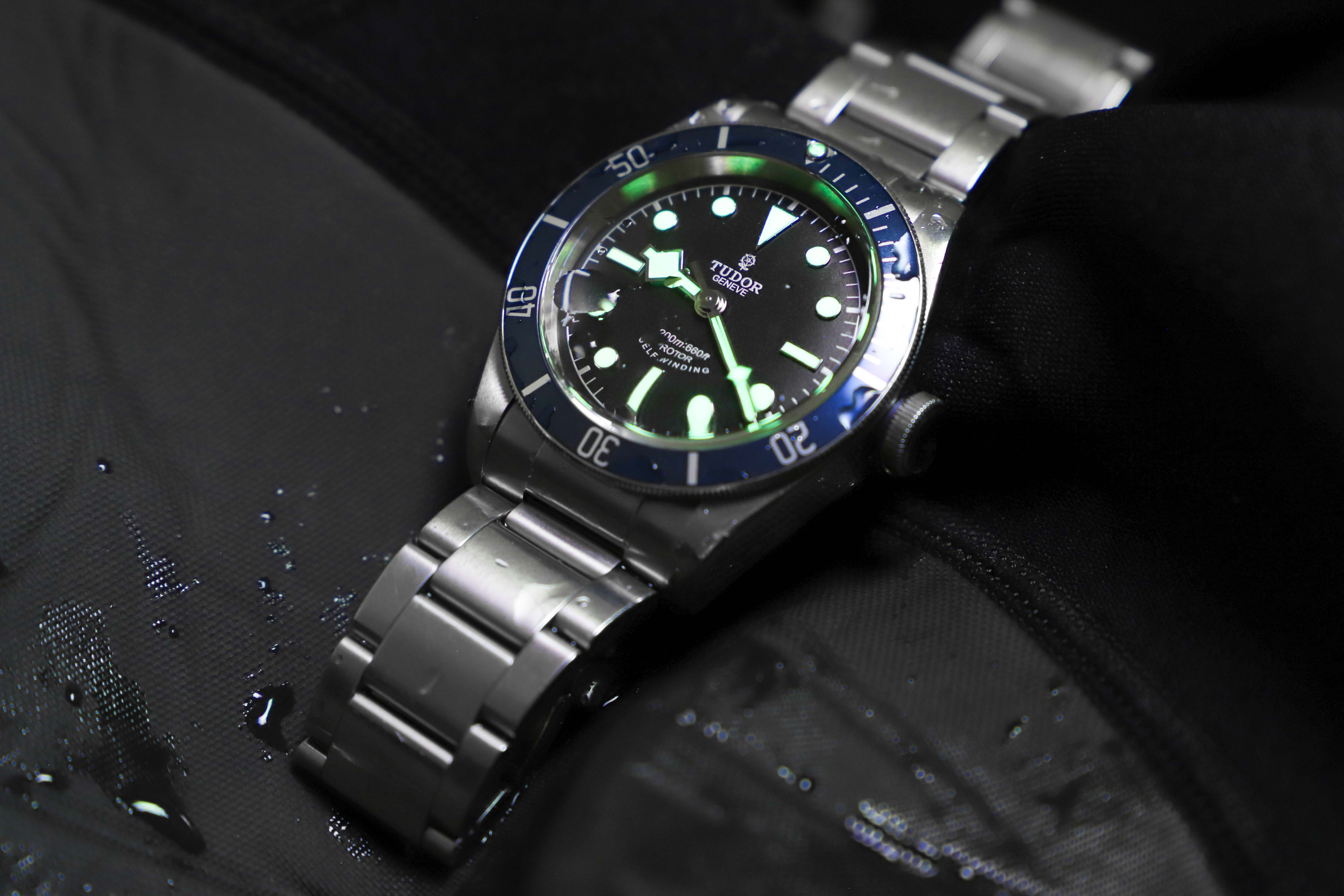
The debate between Black Bay ETA and Black Bay in-house has been present since the ETA version was discontinued in 2016. Watch enthusiasts always tend to favor in-house movements rather than off-the-shelf ETA movements, but the ETA vs in-house Black Bay debate tends to split opinions. So while the logical idea for a lot of people is to opt for the in-house Black Bay, it’s not a consensus.
On paper, choosing the in-house version is a no-brainer. You get a watch that has a movement that has been developed by Rolex and a 70-hour power reserve.
So why is it that there is no consensus?
Well, there are pros and cons to both models, so let’s discuss these two models and their pros and cons.
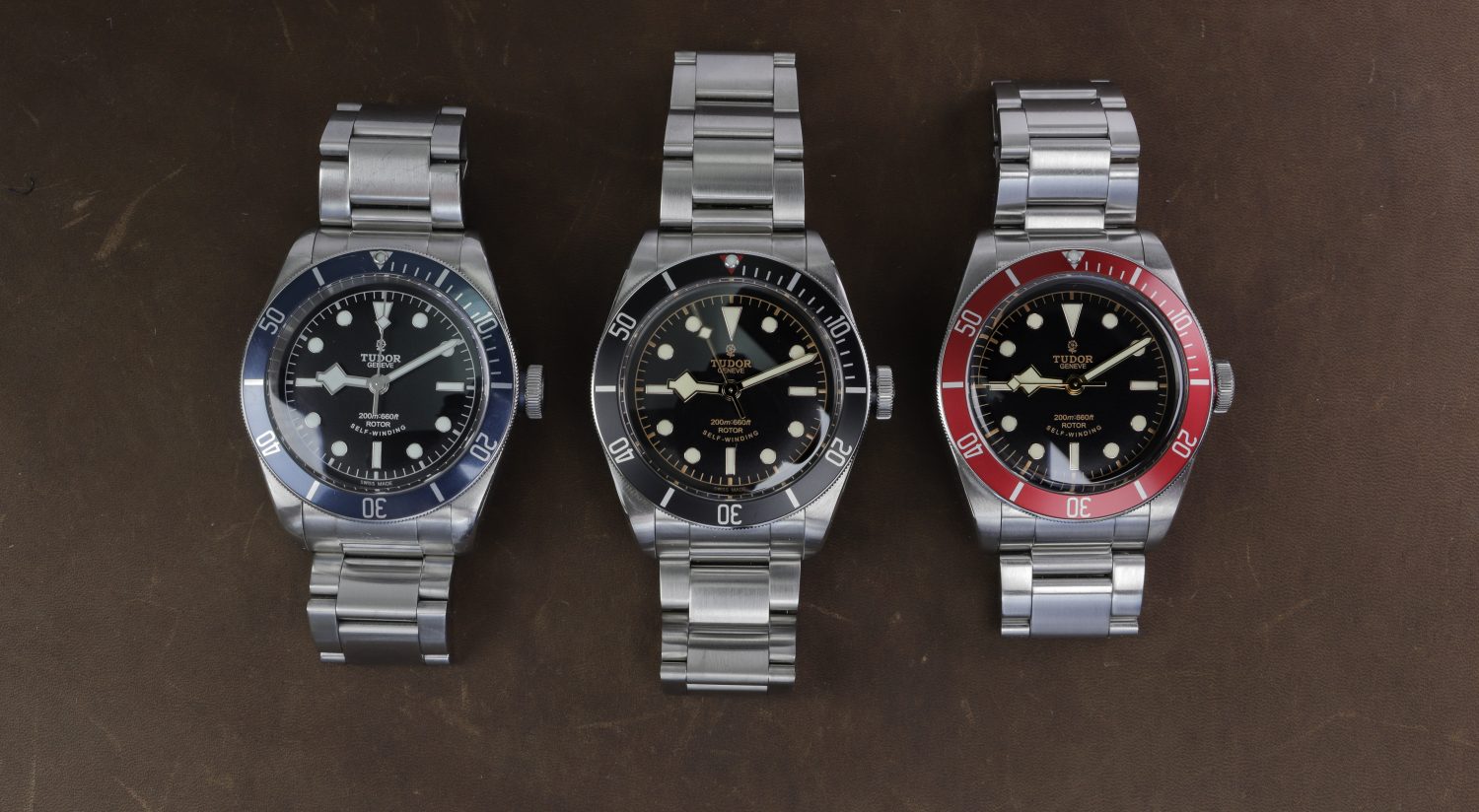
Most purist watch enthusiasts who regard the movement as the most important thing will naturally opt for the in-house version. It simply offers better specifications, and just the label ”in-house” is a great value proposition at the Black Bay price point.
The first generation Black Bay has come to be known as the Black Bay ETA simply because of the fact that it uses an ETA movement. More specifically, a 2824. ETA SA Manufacture Horlogère Suisse specializes in watch movements. The company manufactures movements that a large number of different companies use. The movements tend to be ”basic”, but at the same time very reliable. So while the movements are considered good, in the watch industry, it’s not considered anything special about them.

The argument that people have, however, is that if you are spending that kind of money on a modern watch, why wouldn’t you get the best version you can?
Tudor Black Bay vs Black Bay in-house
First of all, let’s discuss the thickness.
Thickness
Because of the new movement, Tudor has made the in-house version slightly thicker than its predecessor.
On the Black Bay ETA, the caseback is completely flat, whereas the in-house caseback points out. This means that the in-house is thicker and does not sit as slimmed on the wrist as the ETA. The difference is not huge, but the difference in thickness is absolutely noticeable. So if you like the design of the Black Bay, but have a hard time pulling off bulkier watches, the ETA version may be a better choice for you.
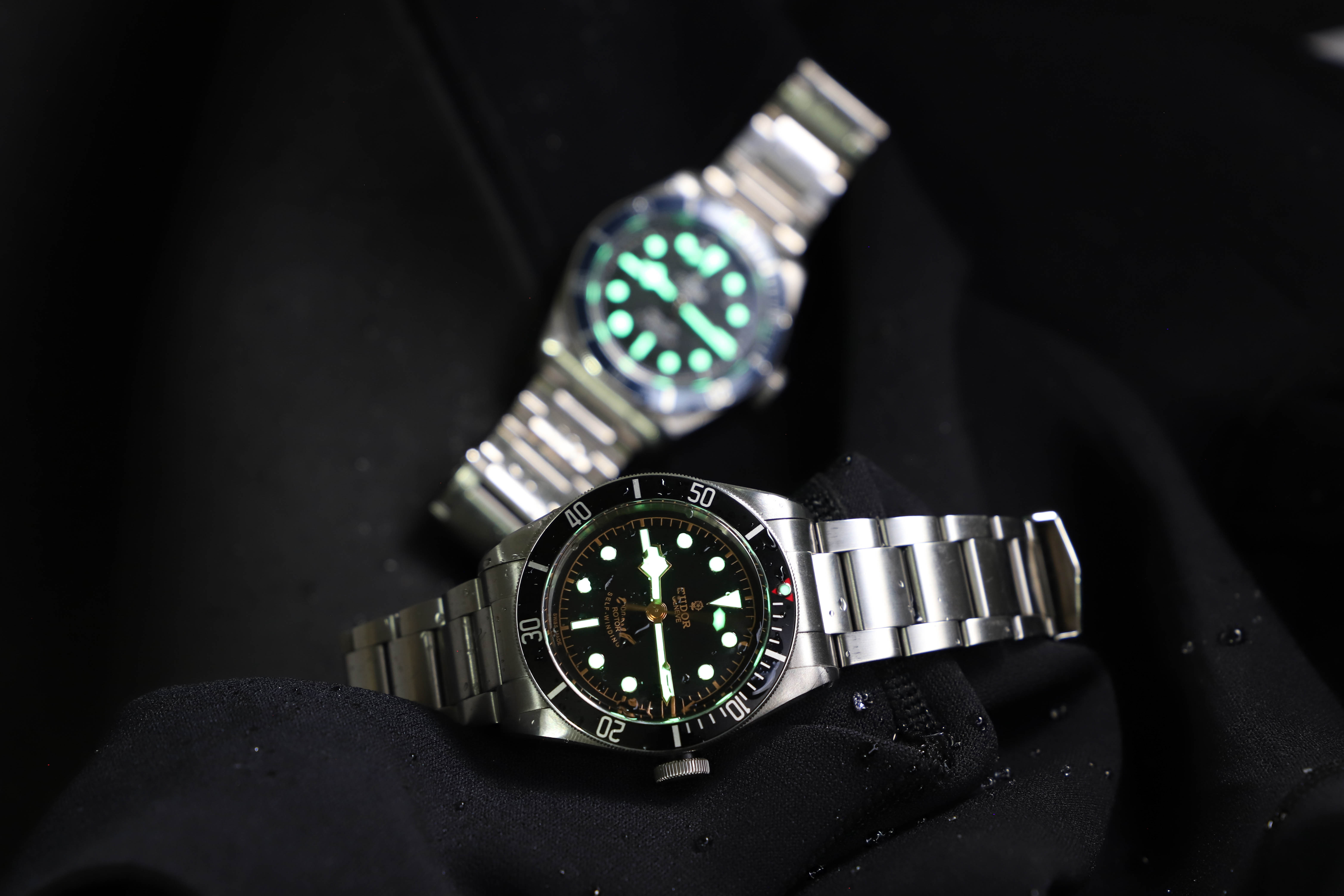
Price
When the in-house version was introduced, the retail price was bumped up slightly from the ETA version. But considering the value proposition of an in-house movement, the bump in price was definitely not substantial. But today, it is getting increasingly difficult to compare their prices, because the ETA version is out of production, and the only way to buy them is on the secondhand market. But at the same time, what is really interesting is that the Black Bay ETA has ever since it was discontinued slowly increased in price.

This is a really interesting marketing trend which goes to show that there is a general interest in this model. But at the same time, the number of ETA Black Bay watches will not increase. The number of pieces will not increase, and as the interest for them increases, the price for them will increase as well.
We will go more into detail about the pricing a bit further on.
Practicality
One of the main arguments for an ETA movement is that it might be a safer bet in the long term. Most watchmakers can work on an ETA movement, but far from most watchmakers can work on a Tudor in-house movement. This means that the service cost will be lower than for the in-house version over time. And for the long term, it will also be easier to have it serviced, as watchmakers are able to get parts for ETA watches much easier.

At the same time, ETA movements will become increasingly hard to get parts for eventually as the Swatch group (owner of ETA) has decided that only Swatch group brands are allowed to buy new ETA movements.
Aesthetics
The caliber is the main difference, but apart from that, there are also a number of visual differences.
The first one is the fact that the in-house movement version replaced the Tudor rose logo on the dial in favor of its new shield logo. Tudor’s rose logo tends to be more appreciated as it stays true to the vintage Tudor dive watches which all have the rose on the dial. Furthermore, the ETA version has what has now come to be known as the ”smiley” dial, which is also one of the easiest ways to tell an ETA version from an in-house version. The ”smiley” dial refers to the ”self-winding” printing on the dial, which is curved as a smiley face. The in-house version does not have this, but instead, it has the printing “Officially certified”.

The smiley printing is an element that both looks good, but also works as a nod to some of Tudor’s vintage dive watches. This fact that the ETA version stays truer to Tudor’s history is something that collectors tend to appreciate. Even so that they can overlook the ETA movement for the benefit of the visual details.
Scarcity
Another thing is scarcity and production numbers. The Black Bay ETA was produced between 2012 and 2016. This can of course not by any means be considered a limited production run, however, it is limited in the sense that they are made no more.

The Tudor in-house version was released in 2016 and is still in production to this date, and it doesn’t look like Tudor has any plans on retiring the 79230. So with the increased interest in the ETA Black Bay, naturally, prices will continue to climb. This is something that they have already done since the model was discontinued, and will continue to happen.
There are three colors of the Black Bay 79220 and 79230 (blue, black, red), and for the ETA version, the black version was only made for 6 months. This means that the number of produced watches is limited, to say the least. As a result, this watch will become a true collector’s piece in the future, and this is already proving true on the secondhand market as the price for the Black version ETA is far more expensive than the blue or red and continues to climb in price.

Tudor Black Bay ETA Bracelet
Another huge difference is the bracelet.
The ETA version has an Oyster-style bracelet with a brushed finish.
The in-house version, however, has Tudor’s new Oyster-style rivet bracelet, which means that it is equipped with faux rivets on the side of the bracelet. The idea of the rivet bracelet is to make it more similar to the vintage Tudor vintage watches, as rivet bracelets were standard back then. But the modern bracelet does not have real rivets, instead, it is only for the visual.
But the bracelet certainly splits opinions. There are a lot of people who dislike the rivet bracelet on the in-house Black Bay for various reasons.

With the rivets, some people think that the bracelet looks busy, and other people just don’t like the idea that the rivets are fake and don’t have any practical benefit.
The ETA bracelet without the rivets simply makes the bracelet look cleaner.

Why choose ETA over in-house?
Let’s summarise some of the reasons why people prefer the Black Bay ETA over the in-house version:
- Better looking dial with more traditional elements (smiley dial and rose logo) (Of course a matter of taste).
- More authentic dial to vintage Tudor models
- Thinner case than in-house caliber – sits more slimmed on the wrist.
- A short production – mainly the Black Bay Black (only 6 months – collectability).
- Tudor has a history of using ETA movements, and the vintage Tudor dive watches have become collectible despite this.
- No rivet bracelet (cleaner and less cluttered).
- Easier and cheaper to service and maintain the ETA movement.
- The ETA movement is tried and true – the in-house movement does not have a proven track record yet.
Conclusion
The debate between Tudor Black Bay ETA or in-house is a never-ending debate.
The logical would be that in-house is something that is highly desirable in the watch community, but this is not necessarily the case for the Black Bay.

One reason is that Tudor has already proven itself a major player in the industry, as they introduce more and more watches with in-house movements. But the main reason is that a lot of people don’t think that the in-house movement of the Black Bay outweighs the trade-offs in cost and aesthetics.
But at the end of the day, you should choose the Black Bay that you prefer. If you prefer a watch with an in-house movement with a better power reserve, then you should opt for the in-house version.
If you find the ETA version more appealing as it is the first model that helped Tudor get back on its feet and thus have greater historical importance, as well as the other visual differences, then you should opt for the ETA.
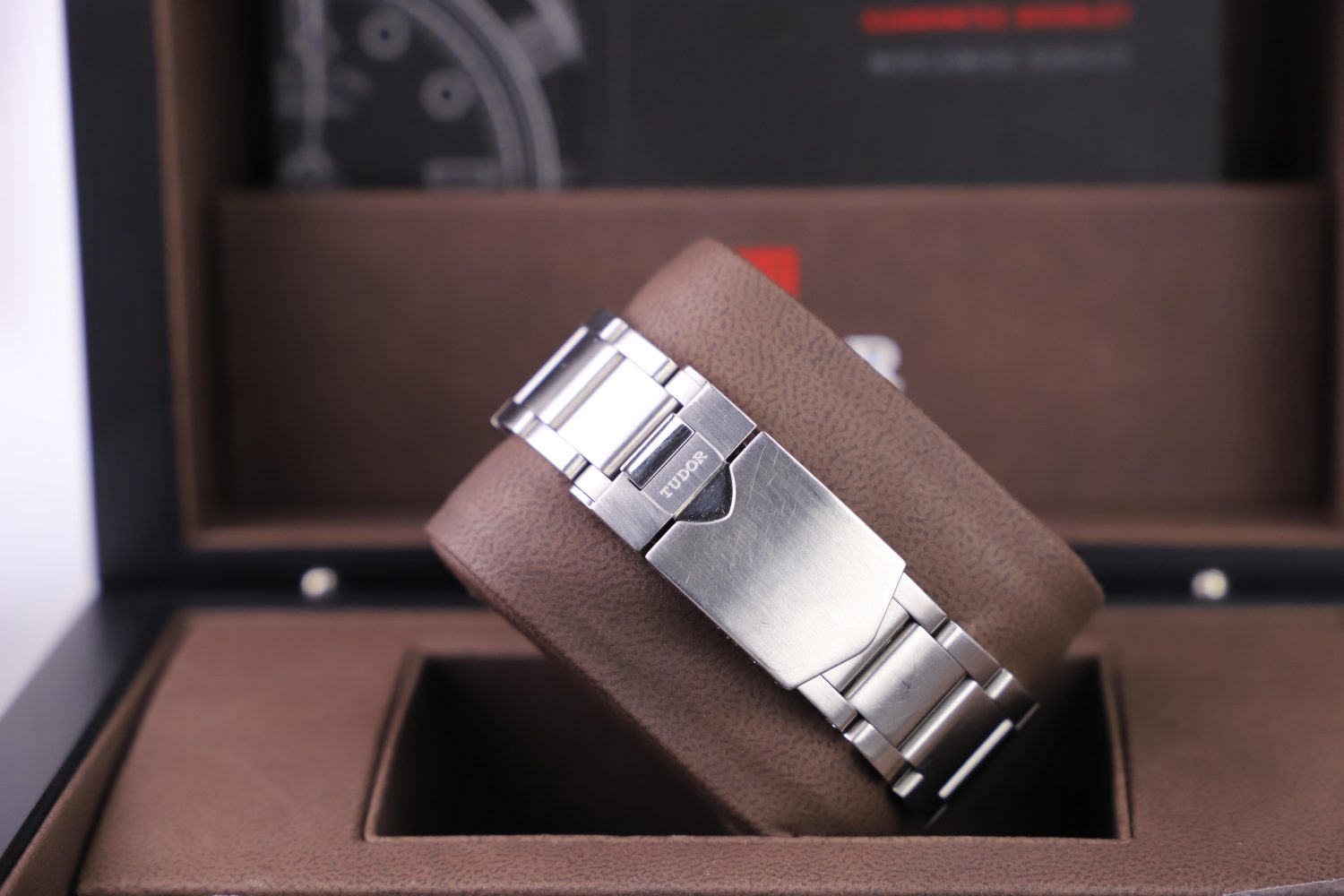
In terms of collectability, there is no question that the ETA will always be more desirable, and this has already proven to be true, and will most likely continue to prove true when the in-house version is discontinued as well.
Tudor Black Bay ETA for sale
If you are looking for a Tudor ETA for sale, you have come to the right place. We regularly have the Tudor Black Bay ETA available, and if we don’t have it in stock at the moment, we will be happy to source it for you. Browse our inventory of Tudor watches here.






I will choose the ETA everytime.
It’s a classic!
Thank you for reading!
Kind regards,
Millenary Watches
My first luxury watch is a Black Bay Black with the vintage leather strap and textil black strap. It is the ETA one and it was a gift from my wife. LOVE MY WATCH everyday more and more.
Thank you for sharing! It’s a stunning watch!
Kind regards,
Millenary Watches
I still love my black bay ETA; 4years on. And despite being called a ‘basic movement’ mine is still keeping to chronograph standard accuracy (+/-4sec/day). It is an uncomplicated (literally) classic watch.
It’s a great piece! Thank you for sharing. Truly a future classic!
Kind regards,
Millenary Watches
I just bought my Tudor Black Bay ET as a present to myself this christmas. Love the watch. It is so fast, every day, becoming my favourite watch to wear. Thanks for the great detailed article, very well written.
Thanks for sharing! Glad you enjoyed it!
Kind regards,
Millenary Watches
Hey, thanks for the article. Nice depth and explanations put forward. I’m fortunate to have both the black and blue eta watches. I sometimes wonder if the blue will be more sought after in future as the black essentially shares the dial with the red model. There are likely less silver text dials around than gold. Anyway, cheers!
Hi Steve,
Thanks for your kind words!
That is indeed a good Thought.
Wear your watches in good health!
Kind regards,
Milleanry Watches
It’s a no brainier, it’s all about numbers and unless Tudor discontinue the newer model , then the the eta will always reign
Thanks for sharing your thoughts! Yes, it is certainly about numbers, but there are also a number of other details that makes it unique and more appealing than the in-house, according to some.
Kind regards,
Millenary Watches
Nice article – thanks. I have the black ETA too, and really love it. Although you compared the thickness of the various iterations of the watch, I think these dimensions make a really huge difference, and were a big part of why Tudor designed the BB58. At 14.8mm thick, the in-house version is a real slab of metal. The ETA version is just 12.8mm thick – which is a significant amount thinner. In fact, it is far closer to the 11.9mm thickness of the BB58, and so seems even thinner than that when comparing all of the case dimensions to the 58 in proportion. I have tried all three on the wrist, and while the 58 is too small for my 7.25inch wrist, the in-house is far too chunky, so the main criteria for me, even more important than dial detail and cost of service, is the thickness of the case size – and here again, the ETA comes out top.
Thank you for sharing your thoughts! We certainly agree with you on this point. The 79230 is indeed quite chunky.
Kind regards,
Millenary Watches
Im currently looking at swapping my Pelagos for the ETA red mostly because of the history and the case thickness is a plus IMO. Great read.
Great choice if you ask us! Glad you enjoyed the read!
Kind regards,
Millenary Watches
Great article,
I’m a proud owner of a Black Bay ETA.
Love the watch. Now I’m looking for the original steel bracelet.
Any thoughts/ tips?
Hi,
On the firsthand, I would turn to a Tudor AD which should be able to order it for you.
Secondly, you can check eBay or chrono24.com
Kind regards,
Millenary Watchrs
Check on ebay.
I’m a huge Tudor Fan. I actually did this. I bought a new Tudor 41 Black dial without bezel and took the bracelet off and sold it for $700. I then sold the Tudor for just $200 less than I paid (with the extra NATO that actually came with the watch). So, yes, you can buy the original steel bracelet, the ETA version, without bezel and it works! I’m looking to do the same thing again very soon. Jomashop ETA non bezel for $2,500. I’m looking at the silver dial ETA BB.
Awesome! Thanks for sharing! Very interesting.
Kind regards,
Millenary Watches
I have had my “Smiley ” for 3 years now . i have the red bezel one . box papers , a bracelet. leather Strap and Fabric Strap , All Tudor..
I love this watch. But after reading a couple of your articles on it , I think i better STOP!! wearing it to work .
I do a manual Job , Ha Ha.. It’s starting to show signs of this on the case and bracelet.. Should i get it repolished or just leave as is. ??
Hi!
Congratulations on a beautiful timepiece! Glad you enjoyed the articles.
The general recommendation is that you should not polish it. True collectors and enthusiasts prefer unpolished. When the watch is polished, it removes metal and can misshape the case. Collectors of all types of items prefer items to be “untouched” or at least in their original shape. Polishing the watch may affect this, for example, if the original shape of the bevels is affected.
Kind regards,
Millenary Watches